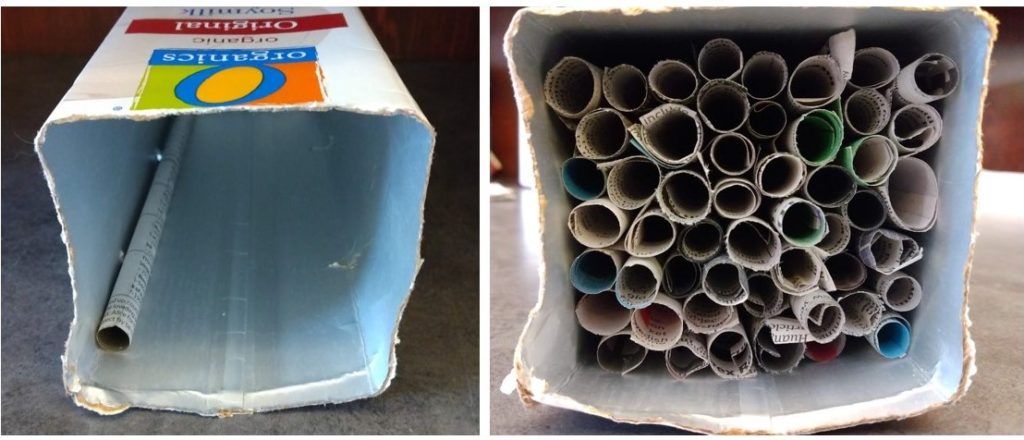Most of us know by now that our native bee populations are under threat due to environmental challenges like the use of common weed killers that contain glyphosate and the loss of habitat due to wildfires and urban sprawl, but how many of us really know all that much about our native bees? There are over 500 species of native bees in Oregon, and all of them are essential to the health and wellbeing of people, agriculture, and native flora and fauna.
On Saturday, April 16 from 1:00 to 3:30 p.m., the Ashland library, in partnership with North Mountain Nature Park, will host Building for Bees, a pollinator program with a focus on learning about our local pollinators and creating a nesting boxes for Oregon’s solitary bees. This step-by-step construction project uses recycled materials, and will help kids understand how to sequence, as well as instilling a sense of responsibility for protecting our world’s pollinators.
This program will be held on the grounds of the park at 620 N Mountain Avenue in Ashland and promises to be an educational, fun time spent outdoors. If you can’t make it to the program, making DIY nesting boxes for native bees is great activity to do at home as a family.
Here are the supplies you’ll need:
• Milk container or something similar (something with a waxed or plastic coating will help keep the bees snug and dry)

• Scissors or sharp knife
• Paper bags or newspaper
• Pencil
• Tape
• String
• Ruler
The first thing you’ll want to do is clean whatever container you’ve decided on using; I used a very small amount of dish soap with a lot of hot water. I gave my container a good couple of shakes, and then I rinsed it thoroughly.
When my container was sparkly clean, I took a ruler and measured 7 or 8 inches (depending on how big your container is) from the bottom and drew a line across.

Taking a sharp knife, I cut off the top of the container.

To ensure that my container was completely dry, I set it aside and got to work creating paper tubes for the bees to nest in.
I cut out several pieces of newspaper that were 6 inches long by 4 inches wide.

Taking one of the 6×4-inch paper sheets, lay the pencil on the edge of the long side and roll the newspaper around the pencil once. Add a line of glue along the length of the paper.

Slowly roll your paper around the pencil and just before you get to the end, run another line of glue.

Congratulations, you now have your first nesting tube! Now you’ll have to make enough to snugly fit in your container.

When you have your tubes rolled and inside your container, the last step will be deciding where to place your nesting box. The optimal location is 6 to 7 feet off the ground, preferably somewhere it will get southern or southeastern sun exposure. Morning sun exposure will encourage your bees to start foraging earlier in the day without needing to use excess energy. Bee bodies aren’t great at regulating and retaining heat, so those first rays of sun give them a nice energy boost. Don’t forget to somehow secure your box so it doesn’t blow away.

Now that your nesting box is complete and set up in a sunny location, it’s time to sit back and see which of our native bee friends move in.
For more information on bees and other pollinators, check out this Pollinators book list.
